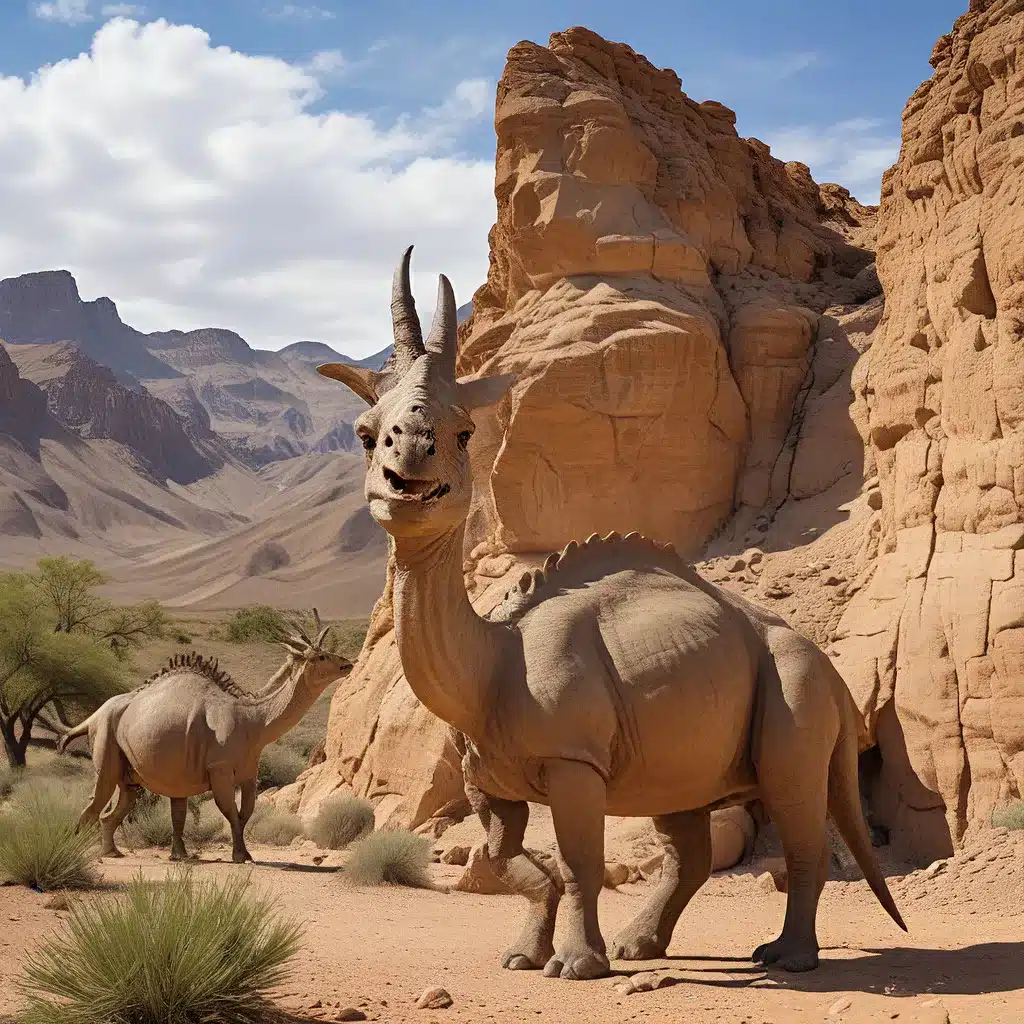
Uncovering the Mysteries of the Chasmosaurus
In the vast expanse of the late Cretaceous period, a remarkable dinosaur known as the Chasmosaurus roamed the ancient landscapes, leaving behind a legacy that continues to captivate paleontologists and historians alike. This horned dinosaur, a member of the ceratopsian family, has become a symbol of the remarkable diversity and engineering prowess of prehistoric life.
The Chasmosaurus, whose name translates to “opening-faced lizard,” was a herbivorous creature that lived approximately 75 to 72 million years ago in what is now western Canada and the northwestern United States. While not as famous as its distant cousin, the Triceratops, the Chasmosaurus was no less impressive, boasting a unique and striking appearance that set it apart from other ceratopsians.
Architectural Marvels of the Chasmosaurus
One of the most remarkable features of the Chasmosaurus was its intricate skull, which featured a large, bony frill that extended from the back of the head. This frill, adorned with numerous horns and projections, was not merely a decorative element, but rather a testament to the innovative engineering of the Chasmosaurus.
Recent studies have revealed that the Chasmosaurus frill was not simply a static structure, but rather a dynamic and highly adaptable one. The bony plates that made up the frill were not fused together, but rather connected by a network of flexible cartilage and ligaments. This allowed the frill to move and flex, potentially serving a variety of purposes, from display and communication to protection and even thermoregulation.
Uncovering the Secrets of the Chasmosaurus Frill
The Chasmosaurus frill has been the subject of intense scientific scrutiny, with researchers exploring the various functions and evolutionary origins of this unique anatomical feature. Some hypotheses suggest that the frill may have been used in sexual display, with males using it to attract mates or intimidate rivals. Others propose that the frill may have played a role in thermoregulation, helping the Chasmosaurus regulate its body temperature in the harsh Cretaceous climate.
One particularly intriguing theory is that the Chasmosaurus frill may have served as a defensive mechanism, shielding the animal’s vulnerable neck from the attacks of predators. The flexible nature of the frill could have allowed the Chasmosaurus to quickly adjust its posture and position the frill to deflect and redirect the force of an attack, much like a modern-day shield.
Exploring the Architectural Marvels of the Chasmosaurus
The Chasmosaurus frill is not only a source of fascination for paleontologists but also a remarkable example of evolutionary engineering. The intricate and adaptable design of the frill showcases the remarkable capabilities of the Chasmosaurus, highlighting the ingenuity and problem-solving skills of this ancient creature.
By studying the Chasmosaurus and its remarkable frill, researchers have gained valuable insights into the adaptive strategies and problem-solving abilities of prehistoric life. These findings have not only enhanced our understanding of the Chasmosaurus itself but have also expanded our broader appreciation for the architectural marvels of the dinosaur world.
Preserving the Legacy of the Chasmosaurus
As we continue to uncover the secrets of the Chasmosaurus and other ancient wonders, it is essential that we prioritize the preservation and protection of these invaluable archaeological sites and fossil specimens. By safeguarding these treasures, we can ensure that future generations will have the opportunity to marvel at the engineering feats and evolutionary adaptations of the Chasmosaurus and the countless other dinosaurs that once roamed our planet.
Through ongoing research, excavations, and public education, we can keep the legacy of the Chasmosaurus alive, inspiring wonder and awe in all who discover the architectural marvels of this remarkable prehistoric creature. By embracing the lessons of the past, we can better understand our own place in the grand tapestry of life and the enduring power of innovation and adaptation.


